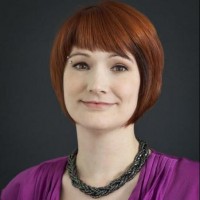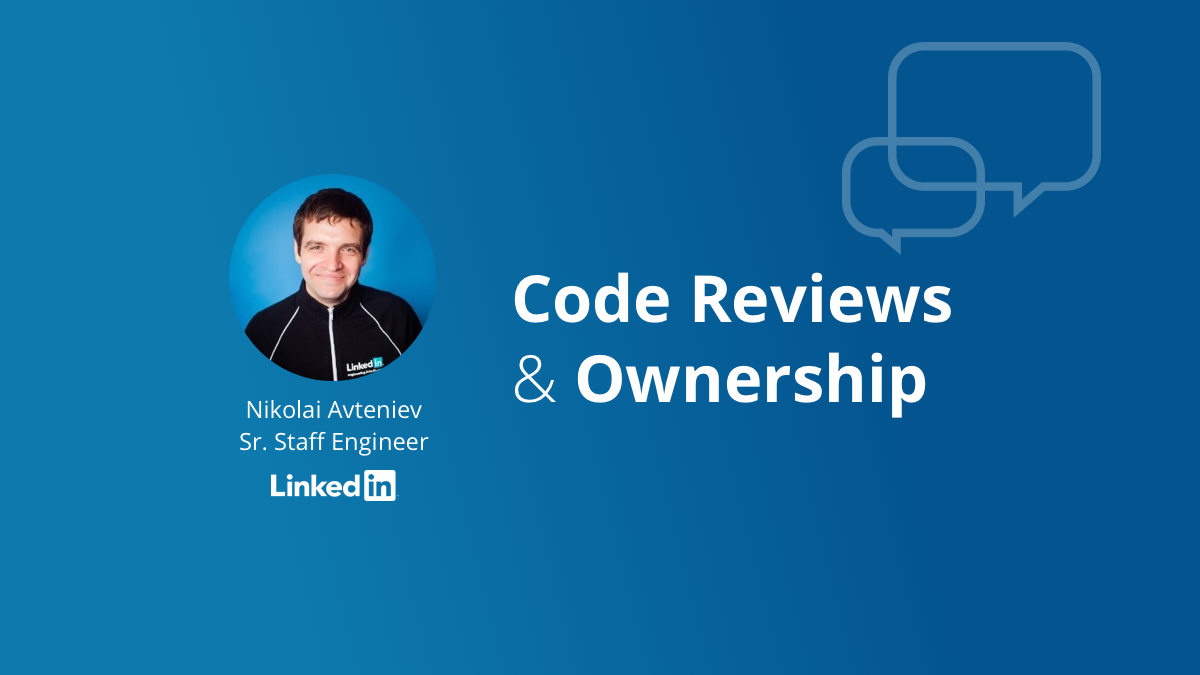Corey Leigh Latislaw is a technologist and Android developer with years 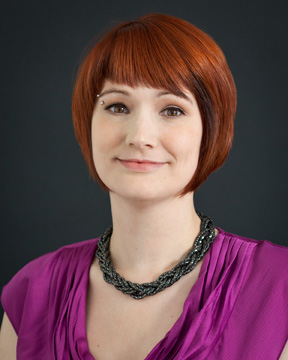 of experience. She founded Philadelphia’s Android Alliance, is a VP for the nonprofit Kids on Computers, and now works as a freelance Android developer. She’s also a sought-after speaker who’s spoken at eight conferences so far, including DroidCon London, Strange Loop, and Write/Speak/Code.
of experience. She founded Philadelphia’s Android Alliance, is a VP for the nonprofit Kids on Computers, and now works as a freelance Android developer. She’s also a sought-after speaker who’s spoken at eight conferences so far, including DroidCon London, Strange Loop, and Write/Speak/Code.
Tell me a bit about yourself.
I studied computer science at Florida State, where I was very active in promoting women in tech. I served as president of the Women in Computing Society and volunteered with another organization, the STARS Alliance, that broadened participation in tech for women and minorities.
After college, I started my master’s and attended the Grace Hopper Conference for Women in Computing. There, I met my future boss at Cisco. Soon I flew to Knoxville, where the job was located, and decided to quit my masters to take it.
I can’t really talk about what I did at Cisco, except that I was on a security team and worked there for about two and a half years. It was a very good experience, but I also found the work a little isolating because we usually found ourselves working alone or with one or two other people. I found that security was great to have as a foundation for my thinking, but it wasn’t really where I wanted to spend my career.
Then I moved to Philadelphia to take a job as a Java middleware engineer at Comcast. There was an opportunity to join the iOS team, which was building an application that allowed you to watch television on your device. I switched over there, just a couple of months before that team won an Emmy for changing how people watched TV on mobile devices.
Soon after, I switched to their Android development team. I started with with the XfinityTV app that allowed you to change your channel or watch On Demand shows on your television, search TV listing data, and view a channel guide in the application. I also wrote half of an app called AnyPlay – it was a system that took your coax cable system, put it through a special box, and broadcast it on wifi so you could watch TV on your Android tablet.
After about two years at Comcast I joined a local consulting firm called Chariot Solutions. As their Android expert, I would go to businesses to figure out what they needed, and then I built it out. So I did everything from debugging applications, to building teams, to building apps. It was a great fit, because they needed someone with a good technology background who could also handle the clients and figure out their needs.
I started speaking at conferences while I was at Chariot. In that first year I spoke at Philly Emerging Technology for the Enterprise; DroidCon Tunisia; Strange Loop, in St Louis; and then DroidCon London.
I’ve spoken at several more since, I think eight in all. One of the most interesting was Write/Speak/Code last year, which was three workshop days – one day of writing op-eds, one day on presentations and proposals, and the third day was open source coding.
You’ve worked to help promote women in tech. Could you talk about some of the challenges and opportunities you’ve faced, or offer advice to tech organizations trying to attract more women?
If you looked around your organization and decided that you want to change the ratio, you have to realize that you can’t get to where you want to be by doing the same things. You’ll need to change your approach, reach out through your networks, research and identify talented technologists, and make your job advertisments more interesting to all potential applicants (gender neutral pronouns, no “rockstars” or “ninjas,” no war analogies). Pro tip: We check your about page to find out how many women are in technical roles at your organization.
As an Android conference-speaking veteran, do you have any topics you particularly like to discuss?
I had one talk that I honed over four different conferences about how to use Android fragments. Then I turned it into a workshop that I called “Fragmentizing the App.”
See, Android was first created for phones, so you had a concept of one activity at a time within an app. If you had a list of locations, and you wanted to see a detail about that location, that detail would then fill the screen. Then you might touch another button that showed a detail of the local restaurants. You could end up with deeply nested applications. Your app could have 10 or 15 screens, and if you’re on a tablet then showing them one at a time is a waste of real estate.
The idea behind fragments is that you can divide your app into discrete pieces, which you can then show 2 or 3 at a time in the tablet version of your app. All the apps I’ve worked on employ fragments – the HowAboutWe dating app, for example, makes excellent use of them.
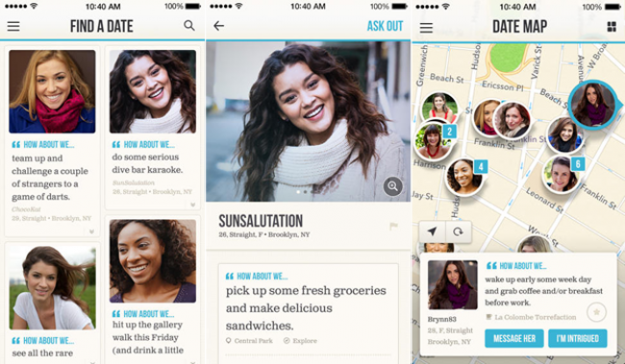 The HowAboutWe app on Android.
The HowAboutWe app on Android.
My latest talk is Loosely Coupled: How Android Components Are Stitched Together, which covers the not only the underlying architecture but the visual/UI elements as well.
Have you thought of teaching in other ways?
I’ve been developing an Android training course and created two free gitbookworkbooks. They form the basis of a training platform that can be taught in person, online, and/or with a video component. I am targeting businesses who have an existing Java base of developers who are interested in developing Android applications in addition to individuals who want to come up to speed quickly.
You spend a lot of time volunteering. What causes are important to you?
I’ve always been passionate about social causes, ever since college. I’ll help out in an organization I care about, or I’ll start organizations myself if I see a need. At Comcast, I joined the board of Women in Cable Telecommunications, where I was the director of Tech it Out, which was about bringing an understanding of technology to people on the non-technical side of the business.
I also recently joined the board of Kids on Computers, a nonprofit that opens computer labs in Mexico, Nepal, India, and Argentina. I’ve been working with them for six months now as VP of operations – basically, my job is to help the operation run more smoothly and be more effective overall. I just got back from several weeks in Oaxaca, Mexico, where we transported 22 new computers to schools in a small village, maintained the older hardware in the existing labs, and taught the local teachers how to use the computers with their classes.
Of the projects you’re working on, which one are you most excited about?
I participated in Hackfit in April of this year, and that’s where my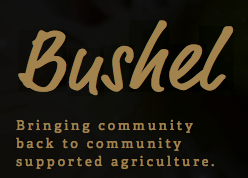 business partner and I started working on an Android app called Bushel. It’s an app for CSA (community supported agriculture) customers. Basically, if someone is new to CSAs, it’s a way to ease their pain.
business partner and I started working on an Android app called Bushel. It’s an app for CSA (community supported agriculture) customers. Basically, if someone is new to CSAs, it’s a way to ease their pain.
Each week, the information about your fruits and veggies would come to your mobile app with storage tips, history, and recipes to help you plan out meals for the week. We’re considering adding a marketing vehicle for the farmers, where they tell their members things like, “Thanks to your your CSA contributions this season, we were able to avoid using 40 tons of pesticide.”
It’s a way to address one of the pain points of being a CSA member, which is providing guidance on what to do with the giant bag of kohlrabi or beets you picked up this week (incidentally, I’ve written a blog post on four delicious ways to prepare beets).
We’re applying to incubators and building out features, and I’m currently consulting in order to bootstrap the business. We’ve talked to local farmers and organizations about how best to connect with them. We’re looking at partnering with farmers directly and helping them with their marketing.
You’ve made a name for yourself as an Android developer. How’d you end up focusing on Android?
While I was on the iOS team at Comcast in 2010, I was in a situation where I wanted to get off of AT&T very badly for my personal cell phone service. At the time, there was no Verizon iPhone, so I got an Android phone, and very soon after that I switched to the Android team and became an Android developer.
I liked that Android was the underdog. It was an interesting place to be, because people didn’t necessarily think it was the place to be. I thought it could be great and beautiful in the way people thought of iOS.
Around March of 2011, I helped found the local Philly Android meetup group, the Android Alliance. We’ve been meeting for three years, but we’ve tuned it into a Google developer group that has an Android component, a Glass component, and teaches other technologies as well. At this point we have a few volunteers who help us with the day-to-day, but I still make decisions and help recruit speakers.
I like that an Android phone is a world phone, accessible to all corners of the planet, and that an Android device is, on average, half the price of an iPhone device. About 80 percent of the world’s mobile market uses Android, and that’s going to keep growing. Android runs on everything – phones, tablets, computers, TV boxes – so there are always new form factors to experiment with. I can get bored very quickly, and I love that Android is always giving me more and more things to learn.
Do you use an IDE? Which one, and why?
I use IntelliJ. It’s fast, has lots of great refactoring tools, rarely crashes, and has Android integration, so you can preview the screen you’re writing. It’s also got a built-in terminal.
Need Corey’s help? Book an 1-on-1 session!
